#1964 Ford GT
Video
youtube
1964 Ford GT Prototype: The Tenacious Underdog's Race to Greatness
#youtube#1964 Ford GT Prototype#1964 Ford GT#Ford GT#Ford#Classic Car#Retro Car#Sports Car#Racing Car#Cars#Auto#Retro
8 notes
·
View notes
Text



1964 Ford Cortina GT
My tumblr-blogs: https://www.tumblr.com/blog/germancarssince1946 & https://www.tumblr.com/blog/frenchcarssince1946 & https://www.tumblr.com/blog/englishcarssince1946 & https://www.tumblr.com/blog/italiancarssince1946 & https://www.tumblr.com/blog/japanesecarssince1947
0 notes
Text

Ford GT40
The Ford GT40 is one of the most iconic cars in automotive history, renowned for its dominance in endurance racing during the 1960s. Here's the full story:
Origins:
In the early 1960s, Henry Ford II, known as "Hank the Deuce," was determined to beat Ferrari at the 24 Hours of Le Mans, the world's oldest active sports car race. Enzo Ferrari had rebuffed Ford's attempt to buy the Italian company, which led to Ford's determination to defeat Ferrari on the racetrack.
Development:
Ford tasked its newly acquired subsidiary, Ford Advanced Vehicles, with developing a car capable of winning Le Mans. The project was named GT (for Grand Touring) with the intention of building 100 road cars to homologate it for racing. Carroll Shelby, who had been involved in motorsports and had success with the Shelby Cobra, was brought in to manage the racing program.
GT40 Mark I:
The first iteration of the GT40, known as the Mark I, debuted in 1964. It was powered by a 4.7-liter V8 engine and showed promise but faced reliability issues.
GT40 Mark II:
Ford made significant improvements with the Mark II, featuring a 7.0-liter V8 engine, and refined aerodynamics. In 1966, Ford achieved its goal when the GT40 Mark II, driven by Bruce McLaren and Chris Amon, won the 24 Hours of Le Mans, marking the first time an American car had won the prestigious race outright.
GT40 Mark III:
In 1967, Ford introduced the GT40 Mark III, a road-going version of the race car. It featured a more luxurious interior and was intended for homologation purposes.
Continued Success:
The GT40 went on to win the 24 Hours of Le Mans three more times consecutively from 1966 to 1969, solidifying its place in motorsport history. Notably, the 1967 race saw an all-American victory with the GT40 Mk IV driven by Dan Gurney and A.J. Foyt.
Legacy:
The Ford GT40's dominance in endurance racing and its rivalry with Ferrari became legendary. It remains an icon of American automotive engineering and a symbol of Ford's determination to compete at the highest level of motorsport.
Modern Resurrection:
In the 2000s, Ford resurrected the GT nameplate with the Ford GT, a modern supercar inspired by the original GT40. The new Ford GT debuted in 2004 and again in 2017, paying homage to its predecessor while showcasing cutting-edge technology and performance.
432 notes
·
View notes
Text

Phil Hill (Ford Motor Company - Ford GT40 Mk1 #GT/102) 24 Heures du Mans 1964. © GP Library. - source Carros e Pilotos.
28 notes
·
View notes
Text

L’eclat de la Ford GT 40 qui marqua l’entrée de Ford dans la competition en 1964, fut une des plus remarquables des voitures de course de son temps etc…..
32 notes
·
View notes
Text
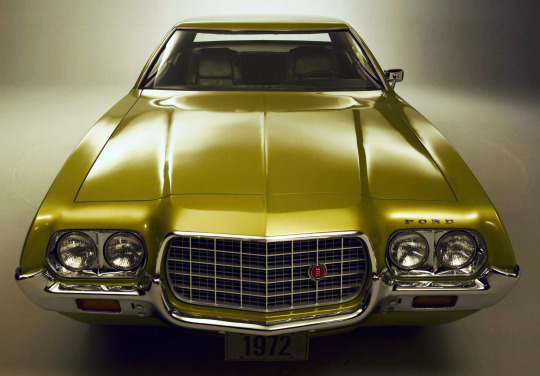
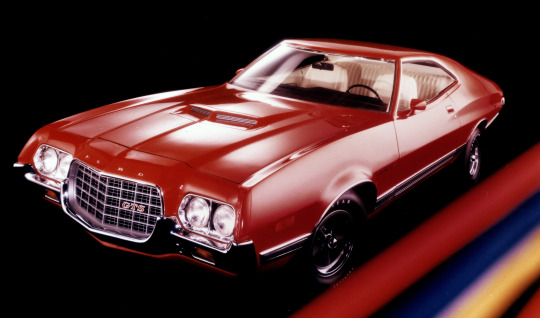


Ford Torino & Gran Torino, 1972. Ford's intermediate range was redesigned and realigned for 1972. This included a switch to body-on-frame construction with 2 door models having a shorter wheelbase than the sedan and wagons. The Torino and Gran Torino were available as a 2-door hardtop (concept shown top) and a 4-door sedan; the Gran Torino Sport was available as a 2-door hardtop and SportsRoof (GTS concept pictured). The station wagon line-up consisted of three models: Torino, Gran Torino, and Gran Torino Squire (pictured). It became the best-selling intermediate for 1972, outselling Chevrolet for the first time since 1964. It was discontinued in 1976 and replaced by the LTD II and expanded Mercury Cougar range
#Ford#Ford Torino#Ford Gran Torino#Ford Gran Torino Sport#Ford Gran Torino Squire#1972#Intermediate#1970s#model range#prototype#concept
174 notes
·
View notes
Text
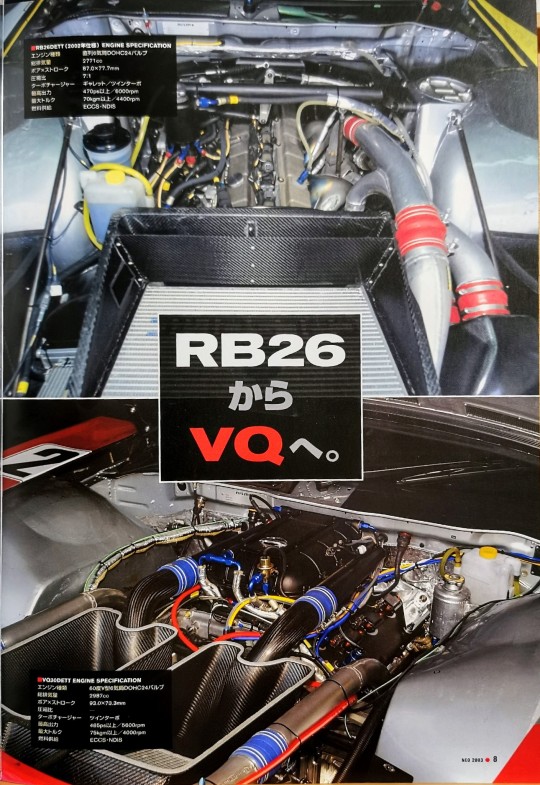
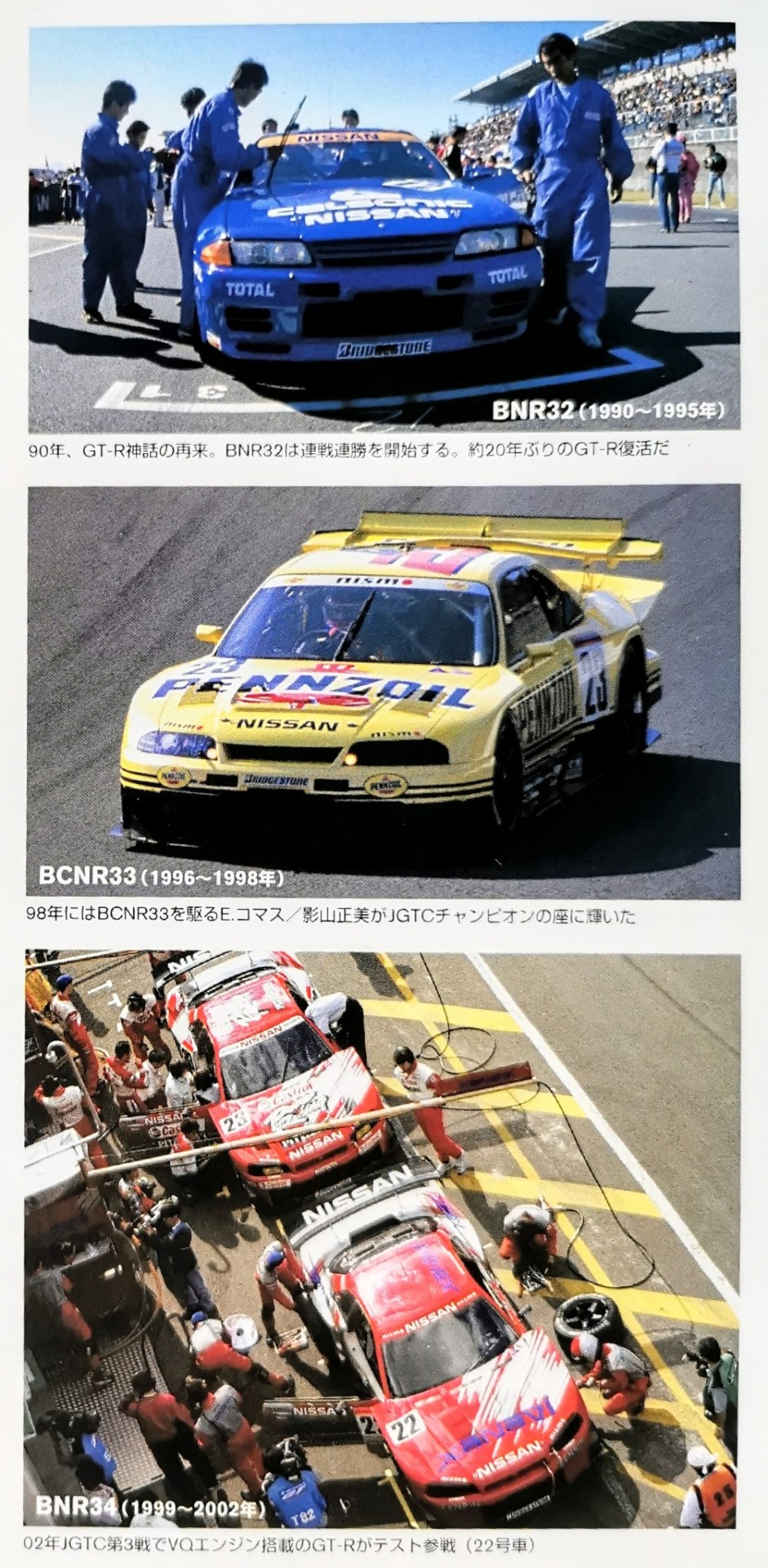
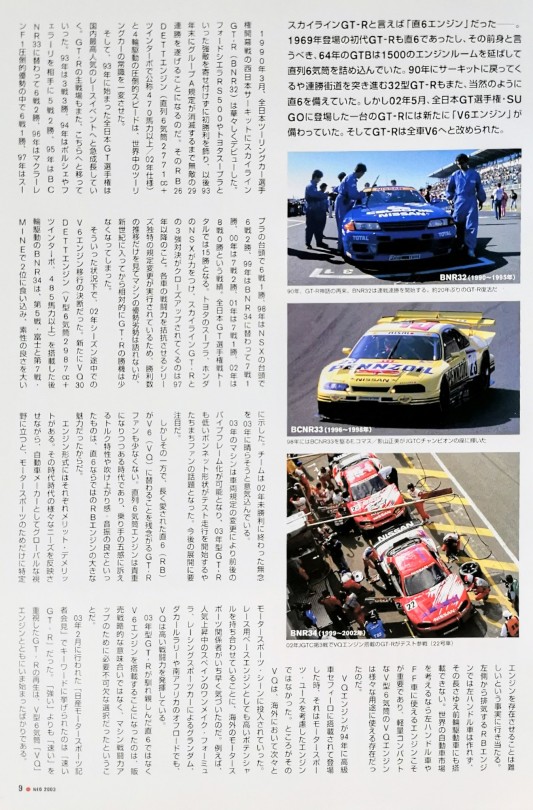
Speaking of the Skyline GT-R, it was a straight 6 engine. The first-generation GT-R, which debuted in 1969, was also a straight-six engine, and its predecessor, the 1964 GTB, had a 1500 with an extended engine room and a straight-six engine. The R32 GT-R, which returned to the circuit in 1990 and went on a winning streak, was naturally equipped with a straight-six engine. However, in May 2002, a GT-R that appeared in the All Japan GT Championship SUGO was equipped with a new "V6 engine." All GT-R models were changed to V6.
In March 1990, the Skyline GT-R (BNR32) made its spectacular debut at the West Japan Circuit at the opening round of the All Japan Touring Car Championship. He achieved his first victory by holding off strong opponents such as the Ford Sierra RS500 and Toyota Supra, and since then has won 30 races.
They would be on an unbeatable 20 race winning streak until the Group A regulations expire at the end of the year. The overwhelming speed of its RB26DETT engine (inline 6-cylinder 2771cc+ twin turbo with nominally over 470 horsepower/02 specification) and four-wheel drive completely changed the conventional wisdom of touring cars around the world.
The All Japan GT Championship, which started in 1993, rapidly grew to become the most popular racing event in Japan. The main battlefield for the GT-R has also shifted here. In 1993, it won 3 out of 3 races, in 1994 it won 2 out of 5 races against Porsche and Ferrari, in 1995 it was replaced with the BCNR33 and won 2 out of 6 races, and in 1996 it won 1 out of 6 races during the overwhelming dominance of McLaren F1. In 1997 1 win in 6 races with the rise of Supra, 2 wins in 7 races in 1998 with the rise of NSX, 1 win in 7 races in 1999 after replacing with BNR34. 2 wins in 7 races in 2000, 1 win in 7 races in 2001, and 0 wins in 8 races in 2002. This is a total of 15 wins in the All Japan GT Championship. It wasn't until 1999 that Toyota's Supra and Honda's NSX gained strength, and a close-up competition between them and the Skyline GT/R began. Due to changes in the regulations unique to the series that equalize the combat power of each car, it is impossible to say whether the machines are superior or inferior just by looking at the trends in the number of wins, but since the beginning of the new century, the GT-R has been relatively competitive. The chances of winning have diminished.
Under these circumstances, the decision was made to switch to a V6 engine midway through the 2002 season. The rear-wheel drive BNR34, equipped with the new VQ30DETT engine (V6 cylinder 2987cc+ twin turbo, over 485 horsepower), showed off its good origins by finishing in 2nd place at the 5th race at Fuji and at the 7th race at MINE. The team is disappointed that it ended 2002 without a win.
The team is determined to make amends for the lack of a win in 2002 in 2003.
The 2003 machine has changed before and after due to changes in vehicle regulations.
It became possible to use a vibrator frame, and the low hood shape of the 2003 GT-R became a hot topic among fans as soon as test runs began. We need to pay attention to future developments.
However, on the other hand, there are many GT-R fans who are disappointed that the long-loved straight-six (RB) will be replaced by the V6 (VQ). This was an era when in-line six-cylinder engines were becoming more valuable, and the RB engine's great appeal was its torque characteristics that appealed to the rider's five senses, as well as its good engine speed and vibration.
Each engine type has advantages and disadvantages. While reflecting the various needs of each era, from a global perspective as an automobile manufacturer, we created products specifically designed for motorsports.
We come to the fact that it is difficult to make an engine exhaust. An RB engine that exhausts from the left side cannot be used in left-hand drive cars, and because of its length, it cannot be installed in front-wheel drive cars either. When considering the global automobile market, it is important to have an engine that can be used in left-hand drive and front-wheel drive cars, and the lightweight and compact V-type 6-cylinder VQ engine can be used for a variety of purposes.
It was.
VQ engine became a luxury in 1999
When it was first introduced in the Cefiro car, it was not an engine designed for motorsports use. However, the VQ was introduced into the motorsports scene one after another overseas. Overseas motorsports officials were quick to realize that it had high potential as a base engine for racing. For example, Spain's one-make formula, which is becoming increasingly popular, Grand Am racing sports cars, the Dakar Rally, and off-road racing in South Africa.
VQ is demonstrating high combat power.
The decision to equip the 2003 model GT-R with a V6 engine instead of the familiar straight-six was not a sales strategy, but an essential choice to improve the machine's competitiveness. I'm saying that.
At the ``Nissan Motorsports Press Conference'' held in February 2003 the keyword mentioned was ``fast GT-R.'' The revitalization of the GT-R, which emphasizes ``fast'' rather than ``strong,'' has just begun with the V-6 VQ engine.
PIC CAPTIONS
BNR32 (1990~1995)
In 1990, the GT-R myth returns. BNR32 begins a winning streak. The GT-R is back for the first time in about 20 years.
BCNR33 (1996~1998)
In 1998, E. Comas/Masami Kageyama, riding BCNR33, won the JGTC championship.
BNR34(1999~2002)
GT-R equipped with VQ engine participates in test race at JGTC Round 3 in 2002 (car No. 22)
11 notes
·
View notes
Photo




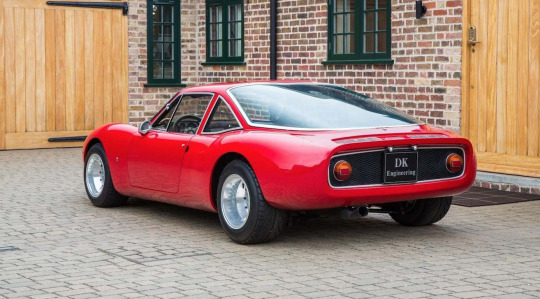



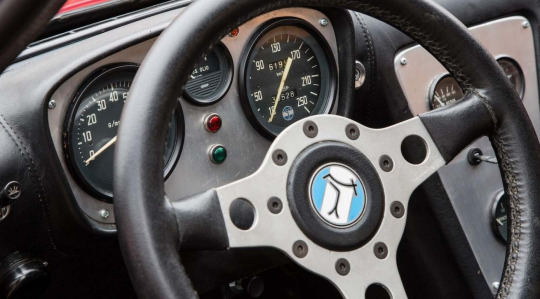
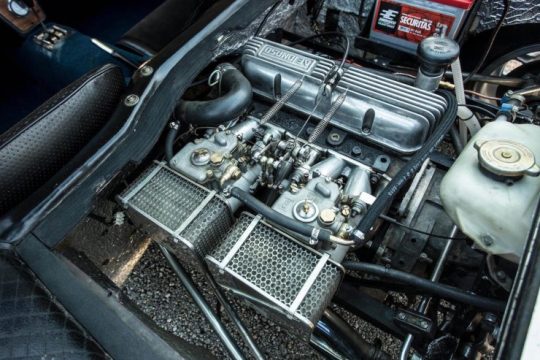
De Tomaso Vallelunga (1 of 54).
Only 54 examples of the De Tomaso Vallelunga were ever made, they were the first of the road cars built by De Tomaso but not the first cars – the Italian company had previously built cars for Formula Junior, Formula 3, Formula 2, and Formula 1. The plan for the Vallelunga was never for De Tomaso to build it themselves. It was developed by Alessandro and his team in the hopes of selling the design to a larger manufacturer, and was shown as a concept car at the Turin Motor Show in 1963.There were no takers, but Alessandro had fallen in love with the design, so he worked out a deal to have the Vallelunga built by Carrozzeria Ghia in Turin – and production began the next year in 1964. The structural design of the Vallelunga wasn’t entirely dissimilar to cars from Lotus, it utilized a steel backbone chassis, a lightweight fiberglass body, and a 1.6 liter straight-4 Ford Kent engine. Unusually, the Vallelunga used its rear-mid mounted engine as a stressed member, helping to increase rigidity of the rear sub-frame.Suspension is independent front and rear, with double wishbones and coil springs, there are front and rear anti-roll bars, and disc brakes on all four corners. This suspension arrangement coupled with the low 726 kilogram (1600 lb) kerb weight makes the Vallelunga is an excellent handling car even by modern standards.Although a Ford 4-cylinder might not sound particularly exotic, the Kent engine was different. It was named for the English county of Kent, which was just across the river from Ford’s Dagenham plant where it was designed.The engine first appeared in 1959 and would stay in production in some guise until 2002 – an astonishing run when you consider the engineering advances that happened over the same time period. Iterations of the Ford Kent engine would be fitted to everything from the TVR Grantura, and De Tomaso Vallelunga, to the Ford Anglia and Marcos 1500 GT.
141 notes
·
View notes
Text



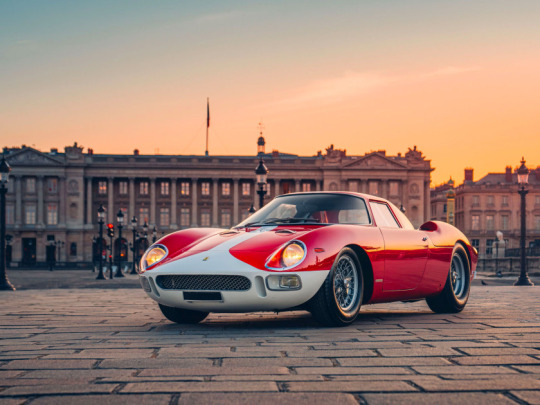
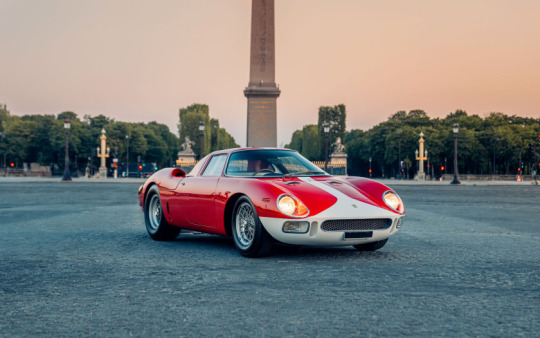
1964 Ferrari 250 LM Berlinetta by Pininfarina
Chassis No. 5901
Engine No. 5901
Internal number 138/LM
Gearbox No. 18
- 2023: 60th anniversary of the Ferrari 250 LM
- One of the absolute masterpieces in the history of the Automobile
- The 10th Ferrari 250 LM on only 32 copies built
- Rarer than a 250 GTO
- A real milestone in Ferrari history: the first car of the brand with a V12 engine in the rear center position, the last to win the 24 Hours of Le Mans before 2023!
- With Ferrari's victory at the hundredth edition of the 24 Hours of Le Mans 2023, the 250 LM is now part of a fantastic saga whose future remains to be written
- Matching numbers (chamber, engine, box, bodywork)
- History followed, restored in 1998/1999 by DK Engineering
- In a major French collection from 2002 to 2022
- Validated by the Ferrari Classiche committee, with a view to its certification
FERRARI 250 LM - MODEL PRESENTATION
Unveiled at the Paris Salon in October 1963, the 250 LM is a berlinette version of the 250 P which, presented in the previous March, can already boast of many successes in the race, before a victory at Le Mans in 1964. Designed under the authority of Chief Engineer Carlo Chiti, it is the first competition Ferrari with a V12 engine in a central position. The 246 SP inaugurated this new architecture in 1961, but with a V6 engine.
For the 250 LM, Scaglietti has signed a masterful shape, whose tapered front draws an amazing contrast with the long and muscular back that reveals the presence of powerful mechanics. The small central arch brings lightness to the pavilion, and one of the most spectacular elements is the vast hood that rises like a cathedral to reveal the bowels of this radical machine.
With the 250 LM, Enzo Ferrari wants to take over from the 250 GTO and have it homologated in GT. But if FIA officials have turned a blind eye to the Commendatore's tendentious arguments that allowed the homologation of the 250 GTO (which he had announced as a simple evolution of the 250 GT), this time they do not let themselves go and demand the production of the 100 copies required. However, Ferrari will only produce 32, so that the 250 LM will remain in the "Prototypes" category and will have to compete against more powerful cars, the most emblematic of which will be the Ford GT40 mentioned above. Glorious protagonist of the Ford-Ferrari duel, the 250 LM beautifully defended the colors of the Italian manufacturer by compensating for its power deficit with qualities of handling and maneuverability that were lacking in other more powerful cars. Carlo Chiti had seen it right by managing to convince Enzo Ferrari to switch to the rear engine, when he was reluctant.
Moreover, the 250 LM should have been called 275 LM (according to the Ferrari nomenclature using the unit displacement) because after the copy of the Paris Motor Show, the following ones received a 3.3 Liter engine; hoping to deceive the vigilance of the FIA for the reasons mentioned above, Enzo Ferrari wanted to keep the name 250.
Given its design, the 250 LM was intended for the track much more than for the road, and most of the copies produced have experienced the throes of competition and its hazards. However, this is not the case with the car we present, whose career took place in the hands of individuals and collectors who have never engaged it in the race. It was certainly present in 1966 at the 24 Hours of Daytona, but as a simple reserve car. This is why it is now beautifully preserved of origin, as we will see later.
THE FERRARI 250 LM OF THE SALE, #5901
The complete history of this work of art is established and documented by brand specialist Marcel Massini. According to the manufacturing sheet of this 250 LM, its tubular chassis was supplied to the Scaglietti bodywork in Modena on June 24, 1964. On September 18, the assembly of the engine, carried out by mechanic Baschieri, was completed under the control of foreman Amos Franchini. It was the same Amos Franchini who supervised the assembly of the gearbox, completed on September 23 by Ivo Giusti. The official order of Luigi Chinetti, boss of the N.A.R.T. (North American Racing Team) and importer of the brand based in New York, dated the following November 6, followed on the 14th by the manufacturer's invoice. On November 20, the car was transported to the port of Livorno and embarked on board the cargo ship Maria Costa, which then left for New York. After his arrival, the car was sold by Chinetti to its first owner, Raymond John Augusterfer, residing in Philadelphia.
On February 5 and 6, 1966, this Ferrari 250 LM was used as a reserve car for the 24 Hours of Daytona by the N.A.R.T., but no damage having stopped the engaged cars, it will not take part in the race and will remain in the paddock. The following year, Luigi Chinetti took over the car and sold it in 1968 to George Arents, from Warren, then in 1969 to Walter and Irene Young, from Wilton. After a visit to Kirk F. White Motorcars (Philadelphia), the car was bought on June 29, 1970 by William B. Rearden (Villanova, Pennsylvania), for the sum of $16,500 with, in soulte, his Ferrari 330 P Spider. Rearden kept her for eight years, while she appeared in issue 37 of Prancing Horse, the Ferrari Club of America bulletin, next to the 330 LMB and the Dino 246 GTS in her collection. Its owner also had the opportunity to use it on June 1, 1974 at the Ferrari club's annual meeting on the Lime Rock circuit, then at the Ferrari Parade organized as the opening of the Watkins Glen F1 race on October 5, 1975.
Artcurial
#ferrari#250LM#prancing horse#le mans#24 hours of Daytona#pinafarina#italian#Artcurial#sixteen million dollars
8 notes
·
View notes
Text

“Starter” July - Preview
Here we go! Preview of June "Starter"!
These 9 cars available for Patrons!
Cars will be available since July 1'st.
1964 Ford Fairlane 500
2009 Volvo C30 R-Design
2015 Porsche 918 Spyder
2020 Toyota GR Supra
1999 Dodge Viper GTS
2023 Cadillac CT5-V Blackwing
2015 Audi TT S
2021 Porsche 718 Boxster S
2017 Infiniti QX80
Go and join my Patreon!
#the sims 4#sims 4#sims4#sims4car#the sims 4 cc#the sims 4 custom content#thesims4cars#the sims 4 cars#sims4vehicles#the sims#the sims 4 cc finds#sims 4 cc finds#the sims 5#sims 4 cars#sims 5#sims 4 cc#the sims custom content#sims 4 alpha cc#sims
9 notes
·
View notes
Text
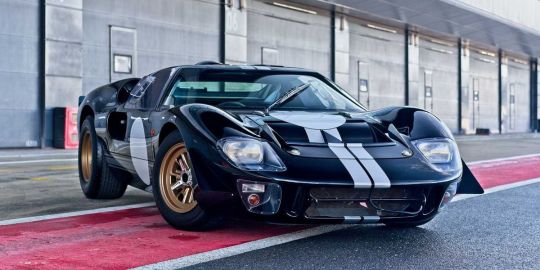
Del Ford GT40 se fabrican entre 1964 y 1969 un total de 107 unidades organizadas en series: MK I, MK II, MK III y MK IV. Luego vendrán las innumerables réplicas y la reedición del siglo XXI, bautizada por los de Dearborn como Ford GT y la velocida del GT40 es velocidad máxima de 320 km/h y medias por encima de los 200 km/h el motor que tiene es EcoBoost de 3,5 litros y configuración V6 el precio es de Las unidades copias de taller tienen un precio de partida de 305.000 euros, incluidos impuestos. para mi es uno de los mejores carros del mundo.
7 notes
·
View notes
Text
Ford Mustang 60th Anniversary: Un homenaje en edición limitada
Este paquete estará disponible exclusivamente para la edición GT Premium, equipada con el motor V8 de 5.0 litros de 486 CV.
El 17 de abril de 1964, en el New York World’s Fair, Ford le presentó al mundo el primer Ford Mustang, un automóvil que no solo revolucionaría la industria, sino que también se convertiría en un ícono de la cultura automotriz estadounidense. Ahora, seis décadas después, la marca celebró este legado con el lanzamiento del paquete 60th Anniversary, una edición limitada que rinde homenaje al…

View On WordPress
0 notes
Text
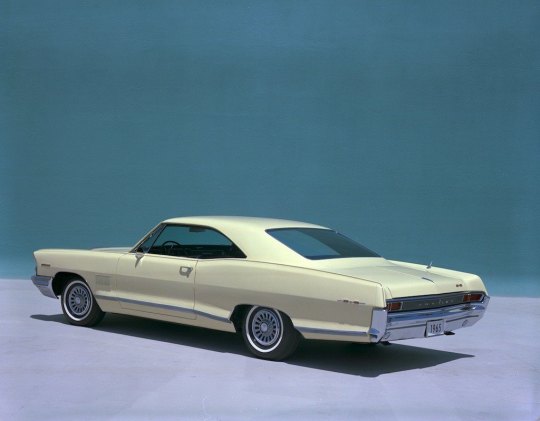
10 Forgotten Muscle Cars That Deserve to Be Restored
by James Derek Sapienza
Source: General Motors
We all know the story; it started in 1964 with the Ford Mustang. No, wait — I mean the Plymouth Barracuda. Or the Pontiac GTO. Or was it earlier with the Pontiac Catalina SD? The ’50s Dodge D-500 maybe?
Debating the origin of the muscle car is like debating over the first rock and roll record; everyone you talk to has a different opinion, and no one is exactly wrong. Let’s just say that by the early ’60s, a generation coming of age fell in love with high-performance midsize cars coming out of Detroit, and for a few brief years, performance ruled the day. Naturally, the good old days seem to look better with each passing year, and as the book was written on the muscle car, a fair amount of contenders fell by the wayside.

1. 1964 Studebaker Avanti R3
Source: Auctions America
The Avanti isn’t generally counted among muscle cars, but then, Studebaker was never exactly considered a performance powerhouse to begin with. But the fiberglass Avanti had a long hood, short rear deck, and 289-cubic-inch V8 a full two years before the Ford Mustang did. In 1964 (after production officially ended), Studebaker bored out nine V8s to 304 cubic inches, slapped a Paxton supercharger on them, and dropped them into remaining Avantis. The result was a 171-mile-per-hour rocket, which the company claimed made it the fastest production car in America. This R3 was sold by Auctions America in 2010 for $96,250. With the collector market being what it is today, good luck finding one this cheap ever again.
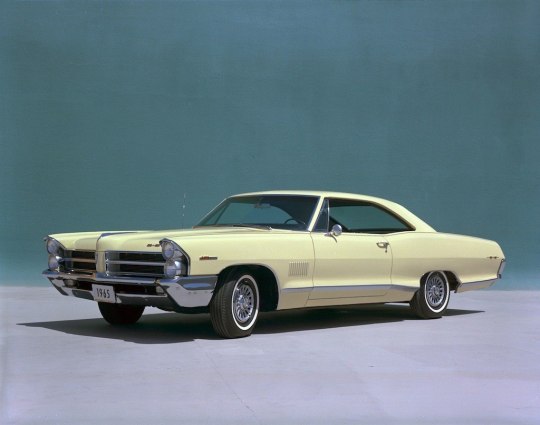
2. 1965 Pontiac 2+2
Source: General Motors
As far as classic muscle cars go, the ’65-’67 GTO is remembered to be about as big as they came. But with the success of the GTO, Pontiac wanted to take its go-fast formula to an even bigger car, which became the ’65-’67 2+2. Based on the full-size Catalina two-door, the 2+2 had its own unique 338-horsepower 421-cubic-inch V8, and in High Output guise, power jumped to 376 ponies, which when tuned right could rocket from zero to 60 in a mind-bending 3.9 seconds. Bigger, plusher, and often faster than its smaller stablemate, the 2+2 deserves a lot more love from speed freaks.

3. 1964 Mercury Comet Cyclone
Source: Ford
For ’60s Ford products, the Mercury Comet was about as basic as they came. Closely based on the Ford Falcon, the ’64-’65 Comet could be livened up with Ford’s famous 289-cubic-inch V8. But for those who wanted more from their Mercurys, Ford built 50 Comet Cyclones for the dragstrip, complete with fiberglass hood, fenders, doors and front bumper, plexiglass windows, and the same 425-horsepower 427 V8 found in the Shelby Cobra. In ’66, Mercury introduced the production Comet GT with the 390 V8, and while they’re capable compact muscle cars, they couldn’t hope to match the insanity of their big block predecessor.

4. 1968 Ford Ranchero 500
Source: Ford
It’s been long overshadowed by Chevy’s iconic El Camino, but the Ford Ranchero was America’s first car-based Ute. And while Chevy was offering the 396 V8 in its muscle trucks, Ford upped the ante in ’68 and made its restyled Ranchero available with a 335-horsepower Cobra Jet 428 V8. Unfortunately, a lack of weight over the rear wheels made the hot Rancheros a handful to drive, so very few were built with Ford’s biggest motor. While it seems like every surviving El Camino happens to be an SS model, we can’t remember the last time we’ve seen a Cobra Jet Ranchero. Come to think of it, we can’t remember the last time we’ve seen any Ranchero.

5. 1969 Chevy Kingswood 427
Source: General Motors
Back in the ’60s, you could order virtually any option you wanted on a car, and companies would actually build it for you. So imagine you’ve got a growing family, and your Corvette just can’t handle them. What to do? Buy a Chevy Kingswood station wagon with Rally wheels, hideaway headlights, seating for seven, and the same 390-horsepower V8 found in your ‘Vette. Only 546 buyers opted for the big V8 in ’69, but a number of 427 Kingswoods spent the next decade making their mark on the drag strip.
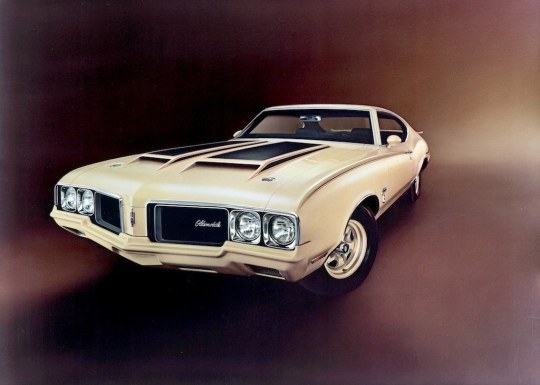
6. 1969 Oldsmobile Rallye 350
Source: General Motors
When gearheads think of outrageous muscle cars from 1969, the Pontiac GTO Judge easily sits at the top of the list. But while the Judge has gone on to become a legend, Oldsmobile’s analog, the Rallye 350, is all but forgotten. Like the Judge (at least at first) it was offered in one outrageous color (Sebring Yellow), had color-matched wheels and bumpers, a spoiler, and a fiberglass hood. And compared to Olds’s top-dog 442, the car’s 310-horsepower 350-cubic-inch V8 made it significantly lighter, allowing it to scramble from zero to 60 in seven seconds and run the quarter mile in a respectable 15.27 seconds at 97 miles per hour. Just 3,500 Rallye 350s were built, making it one of the more obscure muscle cars to ever come from GM.
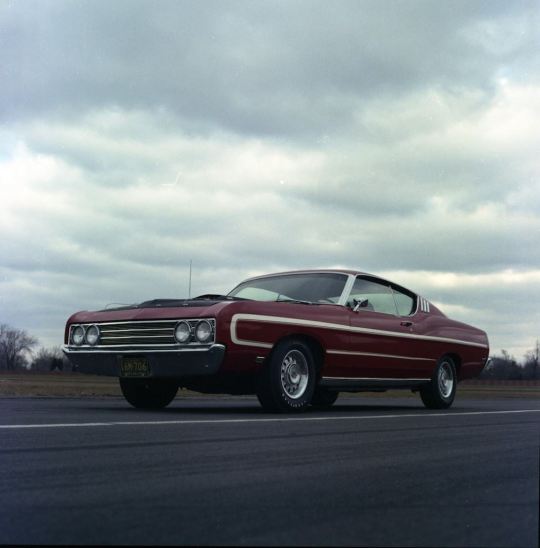
7. 1969 Ford Torino Talladega
Source: Ford
Half a century on, the Plymouth Roadrunner Superbird and Dodge Daytona get all the love when it comes to NASCAR homologation specials. But in 1969, Ford tried its hand at aerodynamics too and built the Torino Talladega. Starting with a Torino Sportsroof, Ford worked with the Holman-Moody race shop to design a sleeker, longer front clip and rear fascia for the car. The Talladega was honed in the wind tunnel — a relative novelty for the era — and powered by the 429-cubic-inch V8 found in the Boss Mustang. Production was over by March; Ford only built 754 of them and they were barely advertised, but the slippery cars dominated during the ’69 season, winning 29 races. In 1970, however, the 200-mile-per-hour Superbird ruled NASCAR, and the Talladega’s time in the spotlight was over. Today, the Talladega (and near-identical Mercury Cyclone Spoiler II) are bargains on the collector market compared to the beak-nosed Mopars.
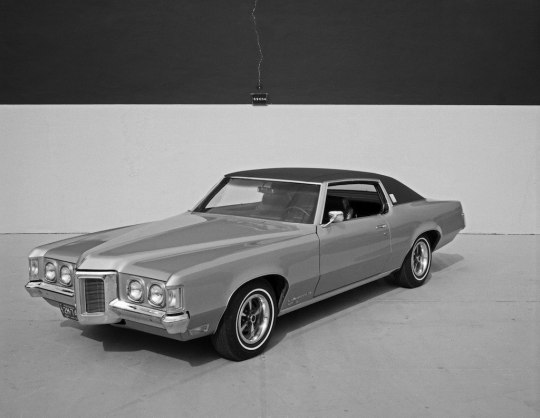
8. 1969 Pontiac Grand Prix SJ
Source: General Motors
The second-generation Grand Prix is largely remembered for its role in popularizing the Personal Luxury Coupe segment, but in its early days, it was one of the hottest cars on the street. With a long hood (the longest hood of any production car in ’69, in fact) and short deck, the Grand Prix was available with Pontiac’s 390-horsepower 428-cubic-inch V8, allowing it to scramble from zero to 60 in 6.5 seconds and run the quarter mile in 15 seconds at 97 miles per hour. Its combination of luxury and power made it the Grand Prix massive hit for Pontiac; within a few years, any semblance of performance would be gone.
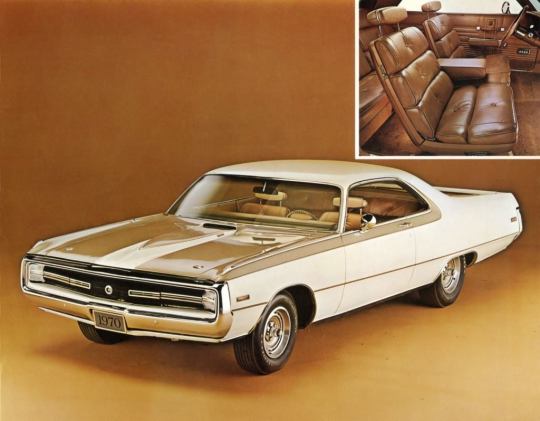
9. 1970 Chrysler Hurst 300
Source: Fiat Chrysler Automobiles
As early as 1970, Chrysler die-hards were feeling nostalgic for the 300-letter series, which ended in 1965. The 300-series carried on, but performance had taken a back seat as mid-sized muscle cars had picked up the go-fast mantle. Chrysler tried to recapture the magic for ’70 by outfitting a 300 coupe with the interior from an Imperial, a fiberglass hood and decklid, a 375-horsepower 440-cubic-inch V8, and a Torque-Flite automatic to handle all that power. At 18.5 feet long and 4,400 pounds, the big Chrysler could still make zero to 60 in 7.1 seconds and run the quarter mile in 15.3 seconds. With just 500 built, the Hurst 300s rank as one of the rarest Mopar muscle cars of all time.
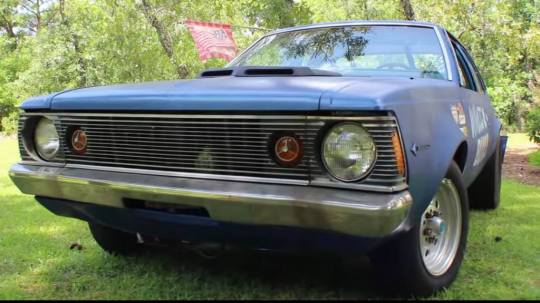
10. 1971 AMC SC/360 Hornet
Source: Chris Andrews Productions via YouTube
In the ’60s, AMC’s red, white, and blue Rebel Machine and SC/Rambler muscle cars failed to move the sales needle for America’s last independent automaker, but they sure caused a scene wherever they went. For 1970, the company had introduced the compact Hornet and Gremlin to replace the Rambler, and with them came the SC/360 Hornet. With an available 285-horsepower 360-cubic-inch V8 under the hood, the small Hornet could hit 60 from a standstill in 6.7 seconds, and run the quarter mile in 14.9 seconds at 97 miles per hour. But in 1970, displacement still ruled the day, and despite being cheaper than a Plymouth Duster 340, AMC found just 784 buyers for its smallest muscle car. We think it’s aged remarkably well, and would love to take one of these ’70s-era sleepers to the drag strip.
#car#cars#muscle car#mopar#american muscle#dodge#ford#chevrolet#chevy#amc#american motors#pontiac#pontiac grand prix#chrysler#hurst#olds#oldsmobile#studebaker#automobile#auto#coupe#Mercury
193 notes
·
View notes
Text

Bruce McLaren (Ford Motor Company - Ford GT40 #GT/102) 1000 km du Nürburgring 1964. © Motorsport. - source Carros e Pilotos.
24 notes
·
View notes
Text
Michael Savage of New Canaan Discusses the Timeless Appeal of the Classic Ford Mustang Muscle Car
Michael Savage of New Canaan Discusses the Classic Ford Mustang Muscle Car
In the world of iconic automobiles, few names resonate as deeply as the classic Ford Mustang. Revered for its groundbreaking design, exhilarating performance, and cultural significance, the Mustang has secured its place in automotive history. Join us as we explore the enduring charm of the classic Ford Mustang, guided by the insights of Michael Savage, a passionate car enthusiast hailing from New Canaan.
A Symbol of American Ingenuity: The Birth of the Mustang
The classic Ford Mustang, first introduced in 1964, emerged as a symbol of American ingenuity and a response to the growing demand for stylish yet affordable sports cars. Michael Savage reflects on the historical context of the Mustang's inception, stating, "The Mustang was a game-changer. It was a car that embodied the spirit of the times – bold, youthful, and undeniably American."
The sleek and compact design, combined with a range of customization options, allowed drivers to make the Mustang uniquely their own. Its affordability and accessibility meant that performance and style were no longer reserved for the elite; the Mustang democratized the thrill of the open road.
Design Elegance: Timeless Lines and Enduring Style
Michael Savage, known for his keen eye for automotive aesthetics, delves into the design elements that have contributed to the timeless allure of the classic Ford Mustang. "From the first-generation fastback to the iconic Shelby GT models, the Mustang's design has always been a head-turner," Savage observes.
The long hood, short deck, and distinctive tri-bar taillights are design cues that have become synonymous with the Mustang identity. Each iteration of the classic Mustang has retained its essence while evolving to meet contemporary tastes. It's a testament to the enduring appeal of a design that seamlessly blends aggression and sophistication, making the Mustang a classic that transcends generations.
Performance Heritage: The Thrill of the Drive
For Michael Savage, the heart of the classic Ford Mustang experience lies in its performance. "The Mustang is not just a car; it's an experience. The rumble of the engine, the responsiveness of the steering, the feeling of acceleration – it's a symphony of sensations that every enthusiast can appreciate," Savage remarks.
Over the years, the Mustang has been home to an array of engines, from the robust V8s to the more fuel-efficient options, ensuring that there's a Mustang for every type of driver. The classic muscle car's ability to balance power and agility has made it a favorite on both the racetrack and the everyday commute, contributing to its lasting popularity.
Cultural Impact: Mustang Mania Across Generations
Beyond its performance and design, the classic Ford Mustang has etched itself into the cultural fabric of America. Michael Savage reflects on the Mustang's cultural impact, saying, "The Mustang isn't just a car; it's a symbol of freedom, rebellion, and the open road. It's been featured in movies, songs, and has become an enduring part of pop culture."
From Steve McQueen's iconic chase in "Bullitt" to the roaring engines heard in classic rock anthems, the Mustang has become a cultural icon that resonates with people of all ages. Its presence in countless films and songs has only served to elevate its status as a symbol of American coolness and automotive excellence.
In conclusion, the classic Ford Mustang, as discussed by Michael Savage of New Canaan, remains a timeless and captivating piece of automotive history. From its inception as a revolutionary sports car to its enduring status as a cultural icon, the Mustang continues to capture the hearts of car enthusiasts across the globe. As Michael Savage affirms, the classic Mustang is more than just a car; it's a testament to the enduring spirit of American automotive innovation.
0 notes
Text
Pony Car Revolution: Mike Savage of New Canaan Unveils the Storied History of the Ford Mustang Muscle Car
The History of the Ford Mustang Muscle Car - Mike Savage of New Canaan
The Ford Mustang, a symbol of American muscle and a pioneer in the pony car category, has etched an indelible mark on the automotive landscape since its inception in the 1960s. Mike Savage, an avid car enthusiast from New Canaan, provides a compelling journey through time, unveiling the rich and storied history of the Ford Mustang muscle car—a vehicle that transcends mere transportation and has become a cultural icon.
Birth of the Pony Car: 1964-1966
The story begins in 1964 when Ford unleashed the Mustang onto the automotive stage. "The Mustang wasn't just a car; it was a revolution," Mike Savage remarks. Introduced as a compact, affordable, and stylish sporty car, the Mustang ignited a new era of performance and personalization. "The 1965 model, often referred to as the '1964½' Mustang, was an instant hit, capturing the hearts of Americans and becoming a cultural phenomenon," Savage adds.
The Mustang's success can be attributed to its combination of sporty aesthetics, affordability, and a wide range of options for customization. It catered to a diverse audience, from young drivers seeking a stylish ride to performance enthusiasts yearning for a capable machine.
Performance Pinnacle: Shelby Collaboration and GT Models
In the mid-1960s, Ford joined forces with Carroll Shelby, a legendary figure in the automotive world, to create high-performance variants of the Mustang. Mike Savage highlights, "The Shelby GT350, introduced in 1965, elevated the Mustang's performance credentials with a modified V8 engine, upgraded suspension, and distinctive styling cues." The Shelby Mustangs would go on to become coveted classics, embodying the marriage of speed and style.
Simultaneously, Ford introduced GT models, including the GT350 and GT500, solidifying the Mustang's reputation as a legitimate muscle car. These models featured powerful engines, racing stripes, and aggressive design elements, signaling the Mustang's commitment to both performance on the track and bold aesthetics on the street.
Mach 1 and Boss Era: 1969-1971
As the 1960s gave way to the '70s, the Mustang continued its evolution with the introduction of the Mach 1 and Boss models. "The Mach 1, with its aggressive styling and powerful engine options, became an icon of the era," Savage notes. "Meanwhile, the Boss 302 and Boss 429 models were designed for racing, pushing the envelope of Mustang's performance capabilities."
These models represented Ford's commitment to dominating the tracks, with features such as distinctive hoods, spoilers, and high-revving engines. The Boss Mustangs left an enduring legacy, showcasing Ford's prowess in the world of muscle cars.
Challenges and Transformations: 1974-1993
The 1970s brought challenges for the automotive industry, including increased emissions regulations and oil crises. Mike Savage reflects on this period, stating, "The Mustang, like many other muscle cars, faced a period of transformation to adapt to changing times." The Mustang underwent changes in design, size, and performance to align with new regulations and consumer preferences.
However, the spirit of the Mustang endured, and Ford introduced the third-generation Mustang in 1979. Known as the "Fox Body" Mustang, it featured a more aerodynamic design and a focus on handling, setting the stage for the performance renaissance of the 1980s.
Performance Renaissance: 1994-2004
The early 1990s witnessed the resurgence of the Mustang's performance capabilities. "In 1994, the fourth-generation Mustang was introduced, embracing a retro-inspired design that paid homage to the classic Mustangs of the past," Savage highlights. "It was a rebirth of the Mustang's performance DNA, with a renewed emphasis on power and handling."
During this era, Ford introduced high-performance variants, including the SVT Cobra, showcasing the Mustang's ability to blend nostalgia with modern performance technology. The SVT Cobra boasted a powerful V8 engine and advanced suspension systems, capturing the attention of enthusiasts.
The New Millennium: Sleek Designs and Shelby Resurgence
Entering the new millennium, the Mustang continued to evolve with sleek designs and a nod to its heritage. "The fifth-generation Mustang, introduced in 2005, embraced a more modern and bold design while paying homage to the classic Mustang styling cues," Savage notes. "It was a time of renewed enthusiasm for the Mustang, with a focus on both aesthetics and performance."
The collaboration with Carroll Shelby saw a resurgence with the introduction of the Shelby GT500 in 2007, featuring a supercharged V8 engine that delivered unparalleled power and performance. The Shelby Mustangs of this era rekindled the excitement of the original Shelby models, becoming symbols of modern muscle prowess.
Sixth Generation and Beyond: Modern Muscle Icons
The introduction of the sixth-generation Mustang in 2015 marked a blend of contemporary design and cutting-edge technology. "The Mustang continued to evolve, incorporating advanced features while staying true to its performance roots," Savage observes. "Models like the Shelby GT350R showcased Ford's commitment to creating track-capable machines."
As the Mustang enters the present day, it stands as a modern muscle icon with a diverse lineup, including the powerful Shelby GT500. "The Mustang has not just survived; it has thrived, adapting to changing times while retaining its core identity as a symbol of American muscle and performance," Savage concludes.
Mike Savage's Connection to the Mustang Legacy
In reflecting on the Mustang's history, Mike Savage shares his personal connection to the iconic muscle car. "The Mustang has been a constant presence in my collection," he reveals. "Each model, from the classic variants of the '60s to the modern Shelby Mustangs, holds a special place in my garage. The Mustang's journey mirrors the evolution of American muscle, and it continues to inspire enthusiasts like me who appreciate the marriage of performance and style."
In unveiling the captivating history of the Ford Mustang muscle car, Mike Savage pays homage to a vehicle that has transcended generations, leaving an enduring legacy as an embodiment of American automotive passion and performance.
0 notes